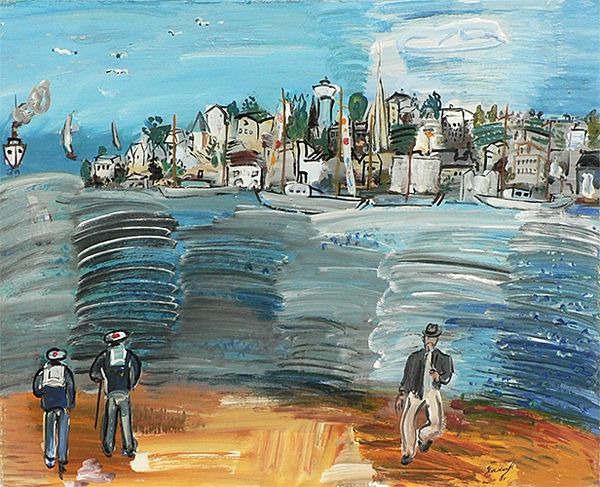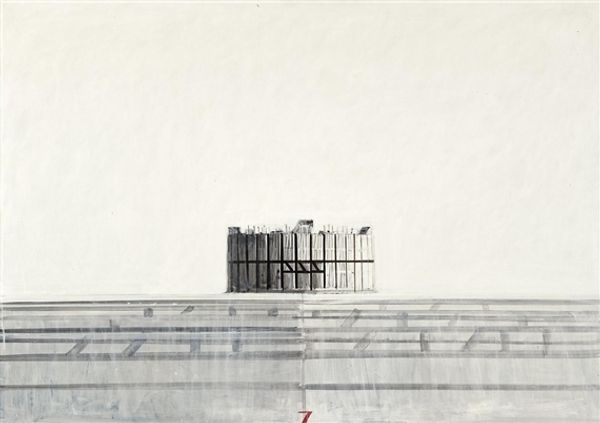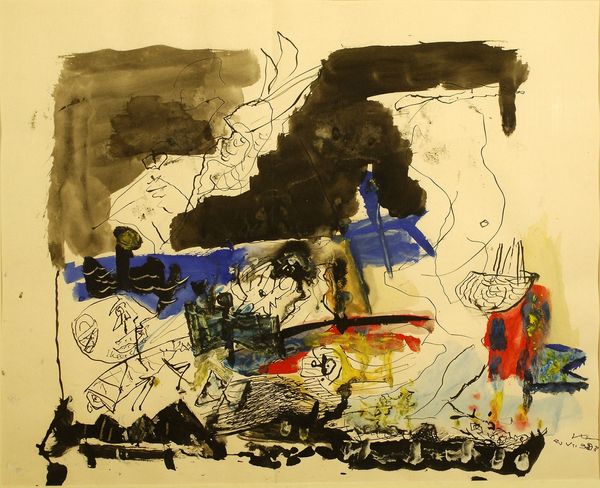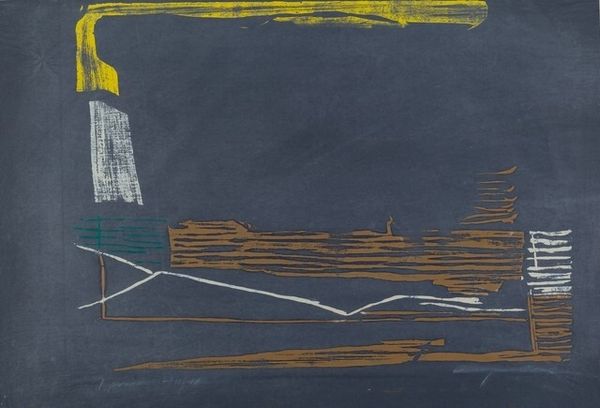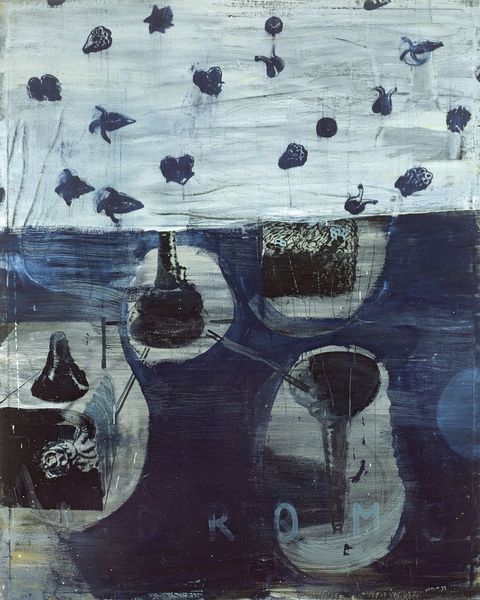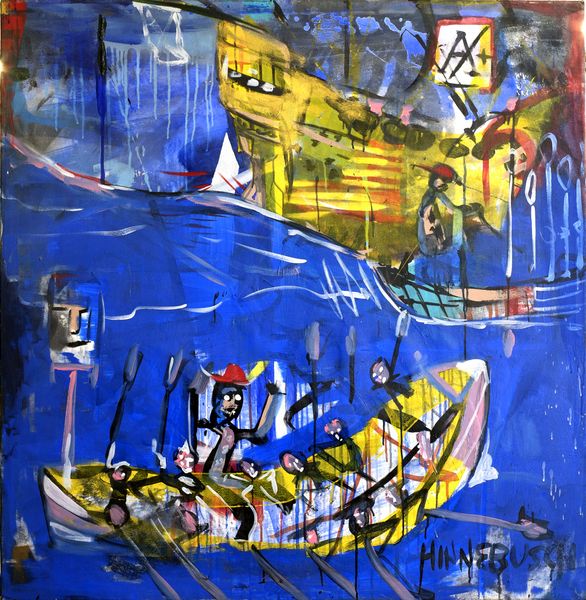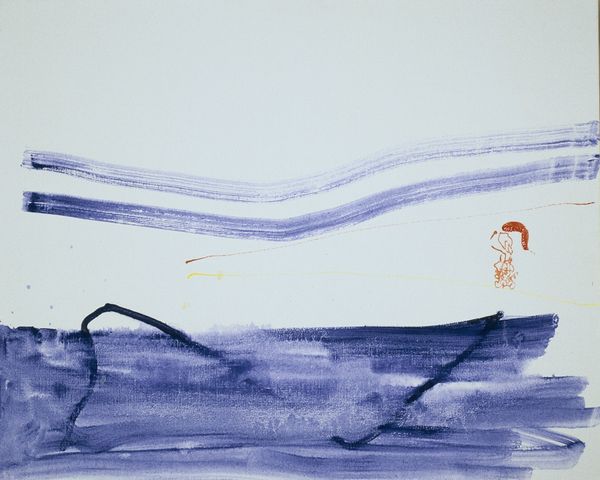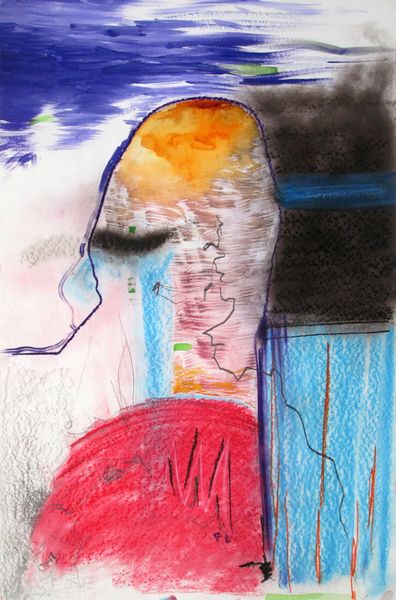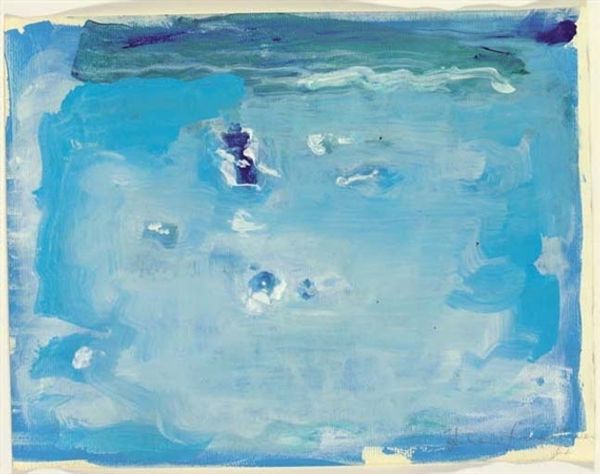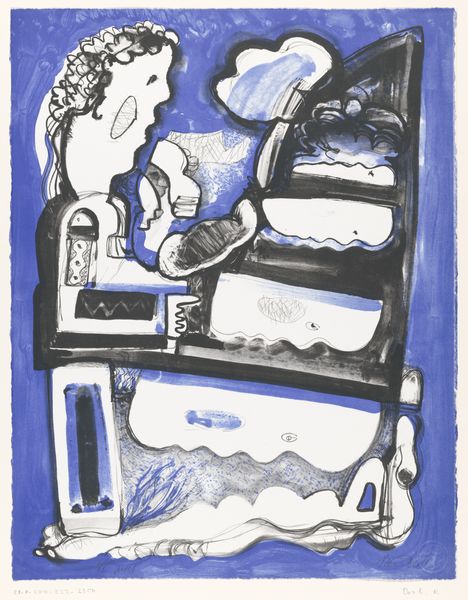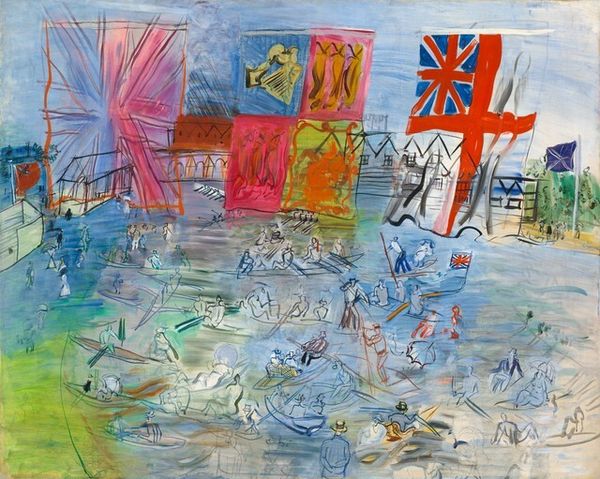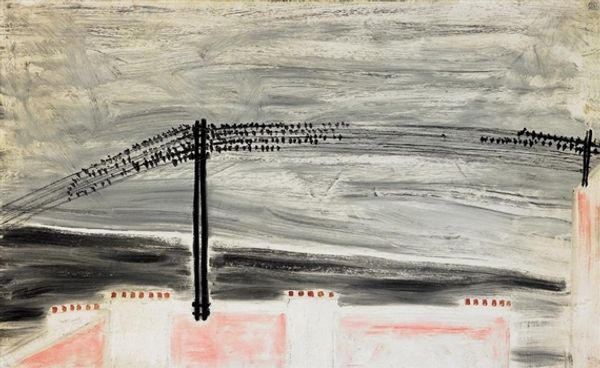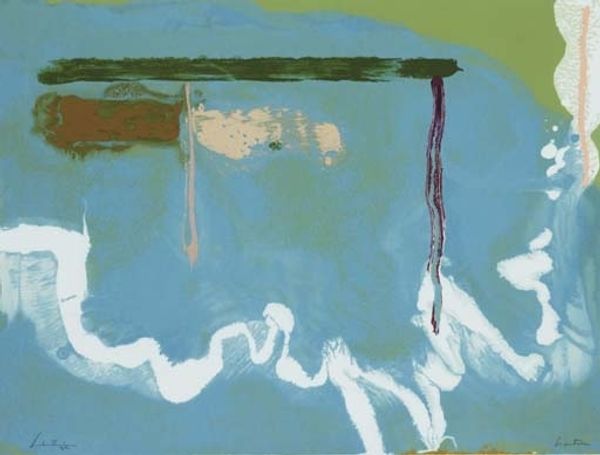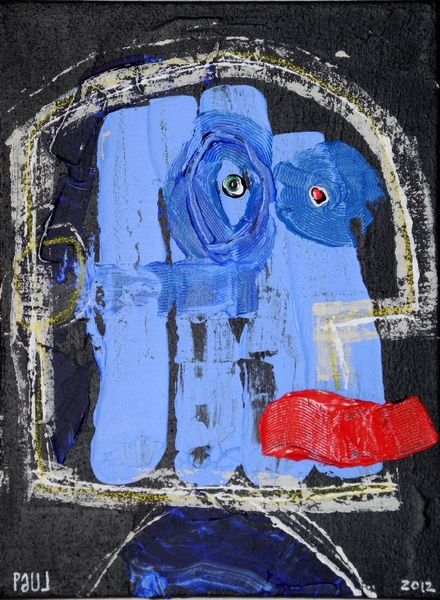
painting, plein-air, impasto
#
painting
#
plein-air
#
landscape
#
figuration
#
impasto
#
modernism
Dimensions: overall: 88.9 × 115.57 cm (35 × 45 1/2 in.) framed: 109.22 × 137.16 × 5.72 cm (43 × 54 × 2 1/4 in.)
Copyright: National Gallery of Art: CC0 1.0
Editor: Here we have Raoul Dufy's "The Landing," painted in 1928. The blue monochrome gives a sense of tranquility, but the sketchy style also feels a bit unfinished. How do you read this artwork? Curator: I see an investigation into the materials of modern leisure. Consider Dufy's deliberate choice to render the scene with such visible brushstrokes, even seemingly hurried application of paint. It almost undermines the idea of polished, bourgeois relaxation it portrays, don't you think? Editor: I see what you mean. It's like he's revealing the constructed nature of this idyllic scene. But what about the figures themselves? Curator: Precisely! They are reduced to their essential forms, almost like figures in a blueprint, stripped bare to a human form, perhaps mocking leisure. And consider the impasto technique – how does that elevate it to a different cultural association? Editor: So, you're suggesting the visible marks of production challenge the traditional view of landscape painting being passive records of the aesthetic, romantic experience of a place. Curator: Absolutely! It encourages us to look at art as a product of labor. How does Dufy's landscape become almost utilitarian? Does it prompt discussions of commodification within art and recreation? Editor: That’s a very interesting take. I was initially focused on the formal qualities but seeing it through a lens of labor and production gives it a whole new layer. Thanks for the insight! Curator: My pleasure! It's fascinating to consider how an artwork’s making reflects our cultural context. Dufy certainly gives us lots to think about!
Comments
No comments
Be the first to comment and join the conversation on the ultimate creative platform.
